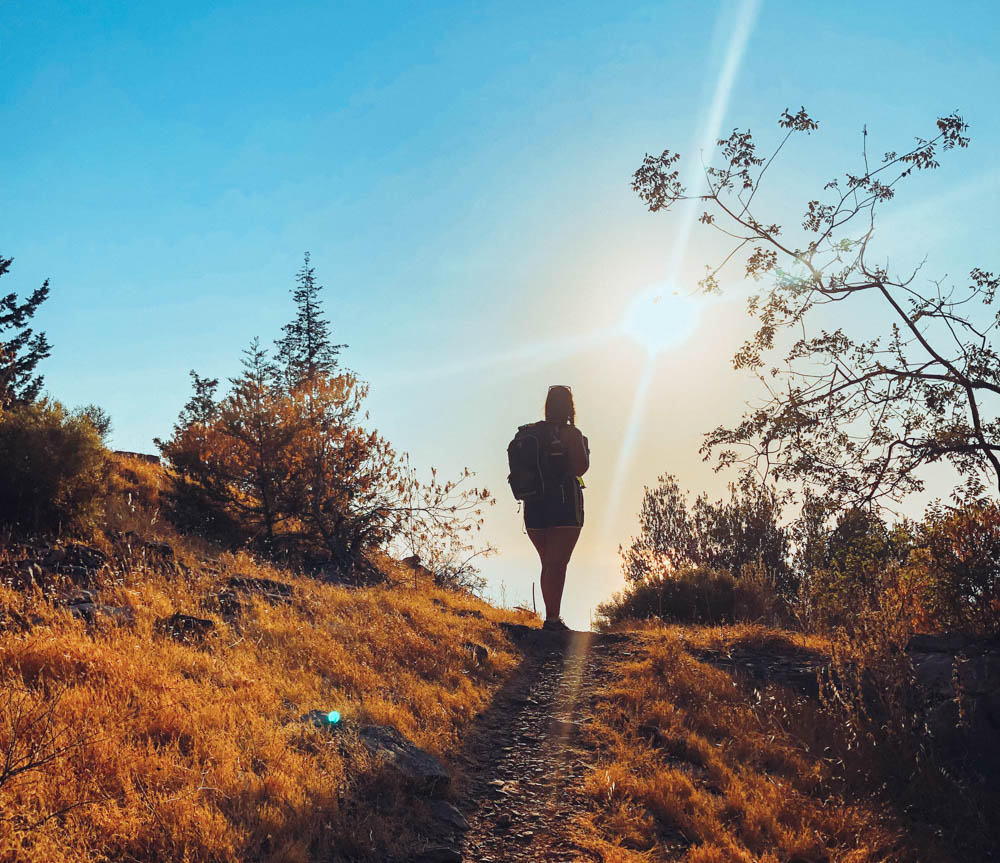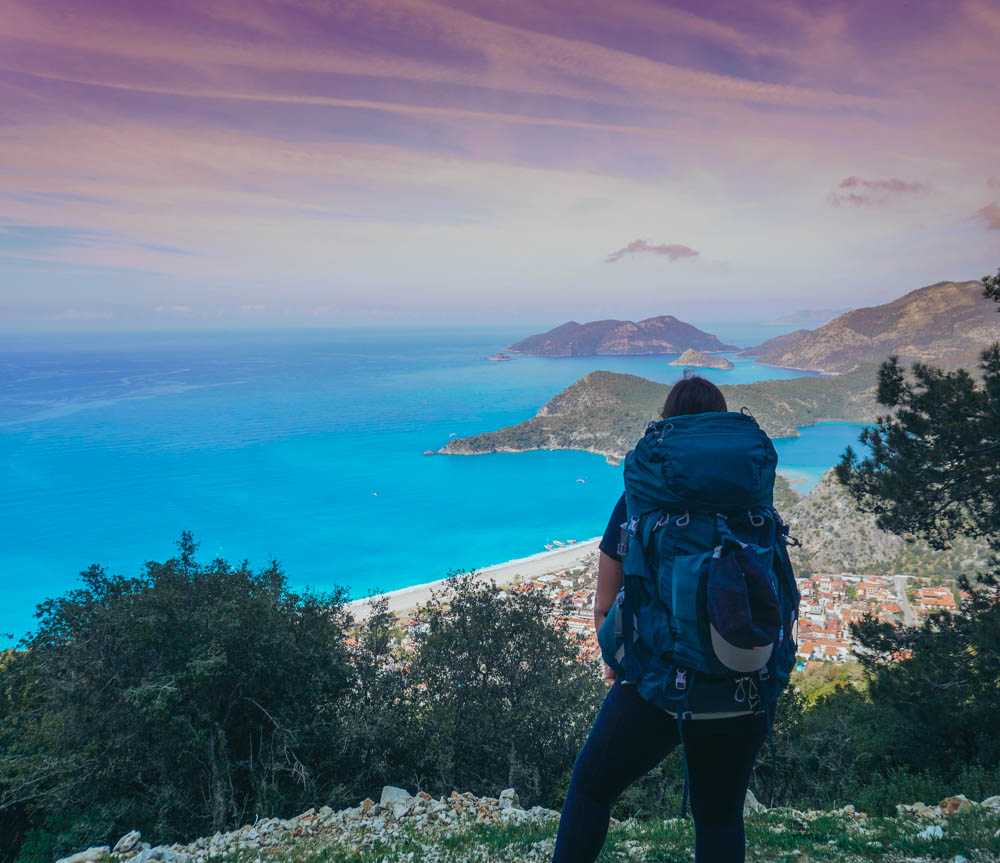Your cart is currently empty!

Trekking for Beginners: Getting Started
Disclaimer: This post contains affiliate links. This means I may earn a commission should you choose to make a purchase using my link. No worries – I love all of these companies, and you will too!
Are you interested in trekking but feel like a complete beginner? This article will help you get started and prepare you for your first trekking adventure.
Trekking is an amazing way to explore the world around you and challenge yourself physically and mentally. This activity can take you to some of the most remote and beautiful parts of the world, where you can experience stunning natural scenery, explore new cultures, and meet wonderful people.

Trekking can also be quite challenging, especially for beginners who are often not familiar with the equipment needed for a successful trek. Terrain and weather conditions can also pose a problem to new trekkers. That’s why it’s essential to prepare yourself thoroughly before embarking on your trekking adventure
This article will provide a comprehensive guide for beginners on how to get started trekking. I’ve included tips on planning your trip, choosing the right gear, and staying safe on the trail.
Table of Contents
Planning Your Trek
The first step to consider when preparing for a trek is carefully planning your trip. You’ll be carrying everything on your back and often won’t have access to the internet or modern comforts, so it’s important to understand what essential items you’ll need along each step of the way.
Here are some essential factors to consider:
Choosing a Destination
The location of your trek will depend on your fitness level, interests, and experience. Some popular trekking destinations for beginners include:
- National Parks: National parks offer many well-maintained trails with varying degrees of difficulty. Popular national parks for trekking include Yosemite, Zion, and Grand Canyon.
- Mountains: Often more challenging, mountains offer a variety of beautiful scenes and adventurous hiking. Popular mountain trekking destinations include the Himalayas, the Andes, and the Alps.
- Coastal Trails: Often less strenuous than the mountains, but still not to be taken lightly are the coastal trials. The Pacific Crest Trail, The Continental Divide Trail, and the Appalachian Trail are popular coastal trails in the USA.
Choosing a Trail
Once you’ve chosen your destination, you’ll need to research the trails available in the area. It’s important to consider the length, difficulty, and elevation of each trail.
Some trails may require permits or have restrictions, like the Pacific Crest Trail(PCT) or the Appalachian Trail(ACT), so make sure you check before you go.
Planning Your Itinerary
You will need to plan your itinerary based on your fitness level and the length of the trek.
For beginners, you’ll want to start with shorter treks and gradually increase your distance as you become more experienced.
If you’re trekking at high altitudes you’ll want to factor in that you may need rest days and acclimatization time.
Choosing the Right Gear
If there’s a time to splurge, it’s when buying trekking gear.
The right gear can make or break your trip.
Here are some essential items:
Footwear
Footwear can make or break your trip. Don’t underestimate the benefits of a good hiking shoe, they’ll make you faster and most importantly will provide support to your feet and knees. When you’re spending all day on your feet, footwear is the most essential item to staying comfortable.
You’ll want to invest in a good pair of trekking shoes or boots that support and protect your feet.
Make sure to break in your new shoes before hitting the trail. You’ll want to wear your shoes around town for a few weeks, and go on shorter hikes before taking them trekking. Not breaking in your shoes is the number one way to having a painful, blister packed trek.
My favorite shoes are the Salomon Women’s Speedcross 5 Trail Running Shoe:

These shoes provide great grip on different terrain, as well as providing ankle and foot support without the bulkiness of hiking boots. These are my favorite pair of hiking shoes I’ve used yet.
If you’re looking for a shoe with more ankle support, you should try the Merrell Moab 3 Mid Hiking Boot:

Clothing
You’ll only be able to bring a few items of clothing to keep your pack light, so you’ll want to choose items consciously. Dress according to the weather and bring only quality items of clothing.
It can be tempting to shove just one more t-shirt in your pack, but there’s nothing worse than carrying clothes around you never end up using. Everyone is dirty and smelly on a trek, and no extra item of clothing can make you any more presentable, so just embrace the freedom of less and pack light.
Your clothing should accommodate the weather conditions, but my go-to packing list is as follows:
1 Pant
1 Short
1 Legging
2 Underwear
1 T Shirt
1 Tank Top
1 Sport Bra
1 Rain Jacket
1 Fleece Jacket
2 Socks
I have some tried and tested favorites that always accompany me on a trek:
I love these Toomett Women’s Outdoor Hiking Pants:

These pants have the right amount of breathability, storage pockets, and durability for the price.
They also can zip off and become shorts, so you’ll have one less item in your pack.
My favorite pair of leggings for cold environments are the BALAEF Women’s Fleece leggings:

These leggings have fleece, stretchy material, and lots of pockets. They’re comfortable and durable. I wore them while trekking in the Himalayas in Pakistan. While most other trekkers wore expensive name-brand outfitters, these affordable leggings kept me just as warm and cozy.
On every backpacking trip, whether it’s somewhere hot or cold, I ALWAYS bring a fleece with me. You never know when there will be a cold wind, especially at night, and you never want to be left shivering in your tent.
I always use the North Face Women’s Fleece:

I love this fleece because it can be rolled up and packed tightly in my pack without taking up too much space.
Backpack
Choosing the right pack is everything. For the beginner, you might not want to go all out and splurge just yet because you’ll want to see what features are right for you. With backpacks, the options are endless.
In the beginning, you will want to find a backpack that sits comfortably on your shoulders and has a hip belt to distribute the weight evenly.
Once you’ve taken a few backpacking trips, you’ll learn what features are important to you.
My favorite backpack is the Osprey Ariel Plus 60G Women’s Backpack:

I love this pack because it has a front zip that allows for you to reach the entire contents of your main compartment. This means you won’t have to unpack the entire contents of your backpack to reach something placed at the bottom of the main compartment.
This pack is also perfect for trekking and traveling. It’s big enough to carry a tent and sleeping bag, and small enough to bring with me on an airplane.
As a beginner, it may be tempting to go for the biggest backpack with the most storage. You’ll learn after a few treks, that the weight and size of your pack are the most important factor to determine how much distance you can cover. With a huge heavy pack, you may find yourself dragging behind. During trekking, bigger is not always better!
Sleeping Bag and Tent
With bags and tents, the most important advice is to look for weight and size.
Many brands claim to have “backpacking” tents and bags but many times they end up being so large I have to attach bags to the outside of my pack. This is okay, but not ideal, as the distribution of weight affects how comfortable you’ll feel hiking.
You’ll want to look for a tent and bag that can both fit into the main compartment of your pack, with room left to spare.
For sleeping bags, you’ll want to purchase one that matches the weather conditions on your trip. Most bags are rated in degrees, to determine which temperature conditions it’s best for sleeping in. I always run cold, so I tend to buy colder weather sleeping bags and just unzipping them, or leaving them open, in hotter climates.
Staying Safe on the Trail
You’ve probably heard better safe than sorry, and I cannot think of a better use of that phrase than while trekking!
The great outdoors is harsh and unsympathetic. One change of the weather or slip and fall can become life or death situation on the trail, unlike in the connected world of society. When you’re without cell reception, you want to be prepared to go it alone.
It’s important to bring these essentials and more when hitting the trail.
Bring a Map and Compass
Even if you’re following a well-marked trail, you never know when a misstep will send you wandering around in circles. To be safe, bring a map and a compass.
You’ll want to familiarize yourself with the trail and keep track of your progress on the map.
Nowadays so many maps are available online that you can download on your phone. One such app, TrailSmart, is my go-to app for trails abroad. You can read more about this app here.
A compass is one of those necessities you might think you don’t need until one trek-gone-wrong proves, a compass could save your life.
If you’re lost on the trail with no idea how to get back, you’ll want to choose one direction and head straight on that path. A compass will help you stay on that navigational guideline. In the woods, it’s difficult to tell which direction you’re heading as you weave through dense brush. Checking in with your compass every few minutes will save you from running around in circles.
The good news is that compasses are very small and can often be attached to the outside of your pack.
Check out these cheap, small and lightweight compasses:

Bring Plenty of Water and Food
Dehydration is the most common condition on a trek.
You’ll want to pack extra water and research any water refill points on the trail.
My standard is to always bring over a liter of water for any hike.
Either I will carry two refillable water bottles or a camel back.
My favorite water bottles are the Nalgene 1 Liter Bottle:

A handy tool is a camping water purifier. You can use these in emergency situations. Like the very popular LifeStraw:

I always throw one of these in my pack whether I’m trekking or traveling. It’s lightweight and you’ll never know when it can come in handy.
Malnutrition can also be a problem, and you’ll want to be very conscious about packing ahead for the trail.
Make sure to bring plenty of water and high-energy snacks to keep you fueled up and hydrated.
Be Prepared for Emergencies
You’ll want to pack a first-aid kit just in case of cuts, scraps, bug bites, and plants like poison ivy.
There’s plenty of small-sized backpacking first-aid kits that’ll fit tight in your pack.
Prepare for the worst and expect the best!
